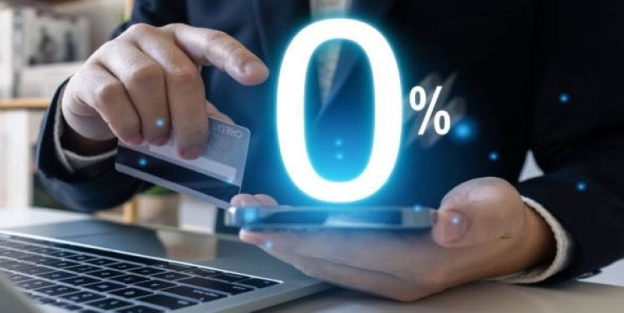How To Spot Hidden Charges In Card Offers
Ever signed up for a card thinking it’s a great deal, only to be hit with fees you didn’t see coming? Credit card offers often come with fine print that hides extra costs. The trick is knowing what to look for before you sign up. Here’s a clear breakdown so you can avoid nasty surprises and keep more money in your pocket.
Annual Fees That Creep Up
Many cards promote “low fees” or even “no annual fee” in the first year. But what happens after that?
Some issuers quietly add a hefty annual charge starting in year two. This could range from $50 to over $500, depending on the card's perks.
How To Check:
- Look for “introductory” or “waived for the first year” in the terms.
- Check the fee schedule, often tucked away near the bottom of the offer.
Example: A travel rewards card might give you free airport lounge access for 12 months, then charge a $450 annual fee once the introductory period ends.
Balance Transfer Traps
Balance transfer offers sound like free money: 0% interest for 12 or 18 months. But there's a catch—most charge a transfer fee of 3–5% of the total amount. If you transfer $5,000, that's $150–$250 right away.
How To Check:
- Scan for “balance transfer fee” in the key facts table.
- Confirm if the 0% period applies to purchases as well, or just transfers.
Tip: Some cards with no transfer fee may have a shorter 0% period. Weigh the trade-off.
Foreign Transaction Fees That Add Up

If you travel or shop online from overseas stores, this one's a big deal. Many cards charge 2–3% extra on purchases made in a foreign currency, even if you're paying online from home.
How To Check:
- Look for “foreign transaction fee” in the fee list.
- Remember, “international use” doesn’t always mean “fee-free.”
Example: Spend $2,000 abroad on a card with a 3% foreign fee, and you'll pay an extra $60 without realising it.
Cash Advance Costs
Withdrawing cash from an ATM using your credit card can cost far more than you expect. Cash advances usually have:
- A one-time fee (often 5% or a set minimum, like $10)
- A higher interest rate than regular purchases
- Interest that starts right away, without a grace period
How To Check:
- Look for “cash advance APR” and “cash advance fee.”
- Know that these charges apply to ATM withdrawals and sometimes money orders or certain bill payments.
Tip: If you need cash, consider using a debit card or personal loan, as they are often cheaper options.
Reward Redemption Surprises
Some cards make it easy to earn points but harder—or more expensive—to use them. You might face:
- Minimum redemption amounts (e.g., you can’t use points until you reach $25 in rewards)
- Reduced value for specific redemption options
- Expiration dates: If you don't use your points fast enough
How To Check:
- Review the “Rewards Program Terms and Conditions.”
- Look for any mention of “point expiration” or “redemption thresholds.”
Example: You might think you're earning $200 in rewards, only to find you can redeem them for just $150 in gift cards.
Late Payment Penalties
Everyone knows missing a payment is bad, but the costs can be worse than you expect. Many cards have a tiered penalty system, where the first late payment fee is $29, but the second in six months jumps to $40 or more.
How To Check:
- Look for “penalty fees” in the summary box.
- See if the card also raises your APR after a late payment (penalty APR).
Tip: Setting up autopay for the minimum amount can save you from penalty fees and higher interest rates.
Introductory Rates That Flip Quickly

A low introductory APR can be a great deal—until it ends. Some cards jump from 0% to over 25% in a single month once the promo period is over.
How To Check:
- See exactly when the introductory rate ends.
- Find the “go-to” APR listed in the terms—it’s often much higher.
Example: If you carry a $1,000 balance after the 0% period, you could suddenly owe $20–$25 in interest every month.
Hidden Service Fees
It's not just the hefty fees—small service charges can add up too. Watch out for:
- Paper statement fees
- Replacement card fees
- Charges for paying by phone with a live agent
How To Check:
- Review the “Other Fees” section.
- Even $5 here and $10 there can add up over a year.
Tip: Opt for online statements and set reminders for payment dates to avoid service charges.
How To Protect Yourself From Hidden Charges
Spotting hidden fees requires a mix of careful reading, comparing offers, and knowing exactly where they hide. Here's a quick checklist:
- Always read the Schumer Box (the table that lists fees and rates before signing anything).
- Search for “fee” or “APR” in the terms if you’re viewing online.
- Compare multiple offers—sometimes a slightly higher interest rate can be worth it if it comes with fewer fees overall.
- Ask direct questions when speaking to a card issuer's representative to avoid surprises later on.
Example Questions To Ask:
- Is the annual fee permanent or just waived in the first year?
- Are there fees for foreign transactions or cash advances?
- How long does the introductory APR last, and what’s the rate after?
Wise Card Choices Save You Money
Understanding card terms before you sign up can save you hundreds of dollars each year. A card with “no annual fee” might still sting you with foreign transaction charges. A “0% APR” deal could come with a steep balance transfer fee and unexpected service charges. The only way to know is to dig into the details thoroughly and carefully.
Choosing the right card isn’t just about rewards or perks—it’s about making sure the benefits outweigh the costs over time. By spotting these hidden charges early, you can keep your hard-earned money where it belongs—in your wallet for plans and financial peace of mind.